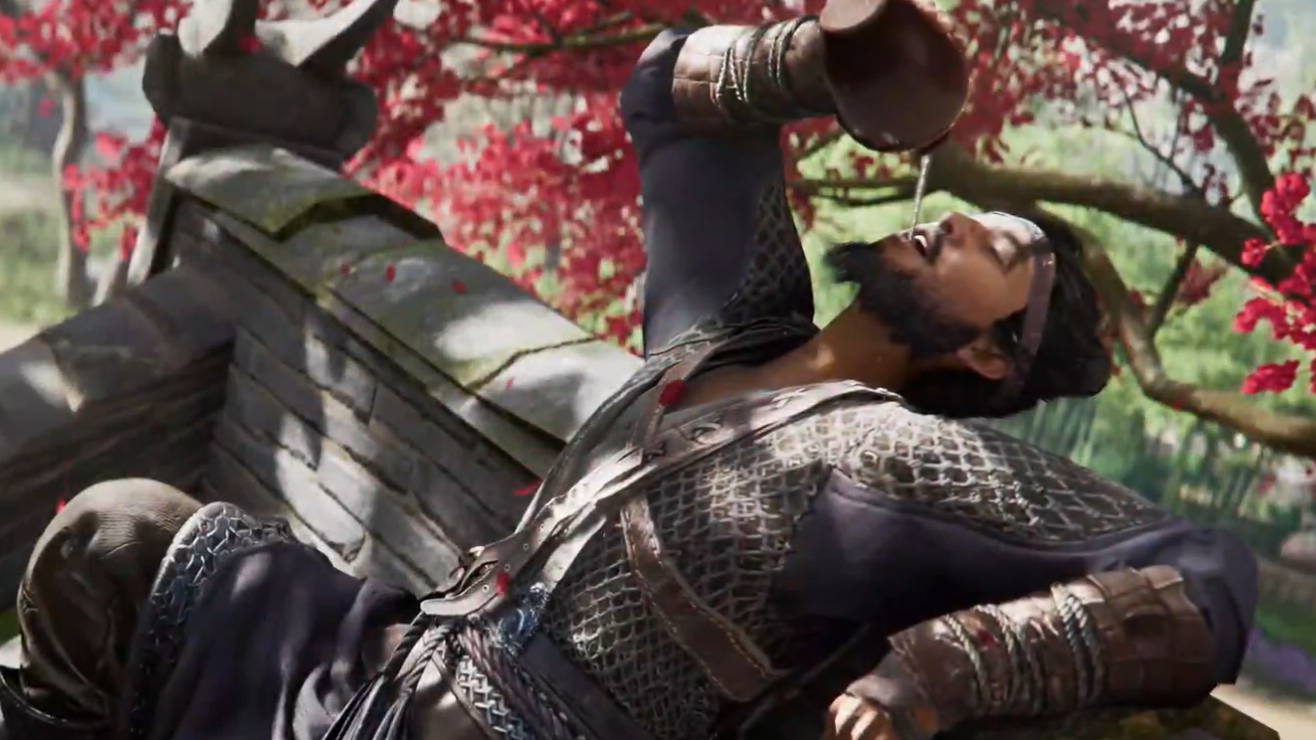Commerce coins sit at the center of Where Winds Meet’s Trade Market, and storax is one of the first items that exposes how this system really works. The game never explains it well, which is why many players reach Kaifeng, see fluctuating prices, and have no idea why someone is spamming co-op requests to “sell ramie” or “join for storax 280%”.
Trade Market basics in Where Winds Meet
The Trade Market (also called the Trade Commission) is a weekly trading loop that pays out commerce coins and housing rewards for moving specific goods between different players’ worlds.
| Element | How it behaves |
|---|---|
| Weekly featured items | Three trade goods are selected each week for everyone (e.g., storax, ramie, porcelain jars). |
| Per‑player volatility | Only one of those three becomes “volatile” in your world; the other two stay at a fixed price for you. |
| Weekend phase | On the weekend you see next week’s three items and can buy them at a cheap, fixed base price in your own world. |
| Weekday phase | On weekdays, the volatile item in each world changes price daily between a tax loss and roughly triple its base value. |
| Goal | Buy featured items at base price, then sell them when and where their percentage price is high to earn commerce coins. |
The loop is deliberate: log in on the weekend to stock up, then come back at least once mid‑week to sell when prices swing in your favor. Doing this with storax or any other featured good is how you build up commerce coins efficiently.

Storax, ramie, porcelain jars and volatility
Storax, ramie, and porcelain jars are early examples of how the volatility rules work:
- In one player’s world, storax might be the volatile item of the week. Its price floats day by day between negative and up to around 300 percent of its base price.
- In that same world, ramie and porcelain jars will appear in the Trade Commission, but their prices are locked at 100 percent. You can still buy and sell them, but there is no profit margin locally.
- In another player’s world, the roles can flip. Ramie or porcelain jars might be volatile there, while storax is fixed.
That design is what makes co‑op trading valuable. If storax is fixed at 100 percent in your world, it might be selling at 220 percent or more in someone else’s. Likewise, if ramie is fixed for you, it might be the volatile item for another player.
How price percentages and “remote prices” work
The Trade Commission UI shows prices as percentages, and it can also display “remote prices” from other players’ worlds.
| Display | Meaning |
|---|---|
| 100% | Item is selling at its base price. No profit or loss before tax. |
| >100% (e.g., 192%, 220%, 280%) | Item sells for more than base price. This is where you profit. |
| <100% (e.g., 89%) | Item sells for less than base price. You take a loss if you trade here. |
When you open a trade good and look up remote prices, you see a list of player names next to percentages. Each entry represents:
- That item’s current price in their world, expressed as a percentage of the base price you paid in your own world.
- The fact that this item is the volatile one in their world that week.
For storax, this means:
- If you see someone with storax at 240 percent, that’s a strong sell target. You bought storax at 100 percent in your world; selling at 240 percent in theirs is a 140 percent pre‑tax margin.
- Remote prices around 100 percent are neutral and not worth the co‑op hassle.
- Very low percentages are only interesting if buying in that world were possible; in practice, stock purchases are restricted to your own world.
Turning storax into commerce coins
Once you understand volatility and remote prices, the loop for any featured item (storax, ramie, jars, and so on) is straightforward.
| Step | What to do | Why it matters |
|---|---|---|
| 1. Weekend buying | On the weekend, buy the week’s three featured items in your own Trade Commission at the cheap, fixed base price. | This locks in the lowest cost and fills your storage with trade goods. |
| 2. Track your volatile item | On weekdays, watch which of the three fluctuates in your world (for example, storax). Check its percentage each day. | This is the one you can profit from without leaving your own world. |
| 3. Sell locally at a strong peak | When your storax price spikes towards 250–300 percent, sell what you can in your own Trade Commission. | Captures the easy profit that does not require co‑op. |
| 4. Buy the other two goods | In your world, buy up the other two featured items (ramie, porcelain jars) at their fixed 100 percent price. | They will be volatile for other players, not for you, which is where co‑op comes in. |
| 5. Check remote prices | With ramie or jars selected in the Trade Commission, search remote prices and look for players offering >100 percent. | Those listings tell you who currently has that item as their volatile good. |
| 6. Request to join | Click the name of a player with a good price and send a message or co‑op request asking to enter their world to trade. | Getting into a high‑percentage world is the core of cross‑world profit. |
| 7. Sell quickly in their world | If they accept, sprint to their Trade Commission and sell your goods at their elevated percentage before prices move. | This turns 100‑percent purchases into high‑margin sales and yields commerce coins. |
That’s the pattern, whether the item is storax or anything else: buy low at home, then either wait for your own volatility or chase someone else’s volatility through co‑op.
What you can and cannot do in other players’ worlds
Co‑op has a few strict limitations that shape how you trade:
| Action in another player’s world | Allowed? | Notes |
|---|---|---|
| Sell your existing trade goods at their Trade Commission | Yes | This is how you take advantage of their volatile prices. |
| Buy fresh stock of trade goods from their vendors | No | Stock purchases (e.g., ramie) are limited to your own instance; the UI is greyed out in co‑op. |
| Buy more than the weekly limit of a featured item | No | Each item has a weekly cap (often 30 units) no matter what world you are in. |
Because of those rules, the theoretical “arbitrage” of buying low in one world and selling high in another does not exist. You always source your storax, ramie, or jars in your own world, then only use other players’ prices as a better place to sell.
Storage limits, housing, and why capacity matters
Trade goods stack up to 30 units per item, but your base commerce storage is small. By default, you can only carry around 20 units total, which creates a bottleneck: you cannot fill a full stack of storax or ramie without making more than one trip.
The game solves this by tying storage expansion to housing and guild upgrades:
| Source | Storage gain | Details |
|---|---|---|
| Base capacity | 20 slots | Available with no additional investment. |
| Guild upgrade (around guild level 6) | +20 slots | Accessible if your guild chooses the relevant commerce upgrade. |
| City property rental (one housing unit) | Up to +60 slots | Unlocked by renting a home in Kaifeng’s housing system. |
With all three, your trade storage can reach around 100 units. That’s a large enough buffer to:
- Buy full stacks of all three weekly goods over the weekend.
- Carry a full 30‑stack of storax or ramie into a co‑op world without having to rejoin multiple times.
- Keep some of the “gamble” goods from previous weeks while still having space for new items.
Without housing, you quickly run into the 20‑slot ceiling, and either have to sell in sub‑optimal conditions or make several co‑op trips to offload a full stack. Renting a cheap starter property in Kaifeng specifically for the storage upgrade is usually worth the early commerce coins it costs.
Weekend buying vs. weekday selling cadence
The Trade Market is deliberately split into two rhythms so players have clear windows for each part of the loop.
| Phase | When | What to focus on |
|---|---|---|
| Weekend | Weekly reset through the end of the weekend | Learn which three items are active; buy as many as you can at the fixed, cheap base price in your world. |
| Early weekday | First 1–2 days of the workweek | Check which of the three is volatile in your world; sell that one locally when its percentage looks good. |
| Mid‑week | Remaining weekdays before the next weekend | Use remote prices to find co‑op hosts whose volatile items match the other two goods you hold and sell there. |
The critical detail is timing on the sell side:
- Volatile prices change daily in each world. A storax spike to 280 percent today could slump back towards 110 percent tomorrow.
- Selling too early locks in smaller wins; waiting too long risks missing the peak or the reset.
- All trading for that week’s three featured items should be finished before the next weekend, when the cycle resets to a new set of goods.
Commerce coins: what they buy and why they’re worth the hassle
Commerce coins are a separate currency from standard coins and premium Echo Jade. They are earned by using the Trade Commission, and they mainly feed into lifestyle progression rather than raw combat power.
| Use | What you get |
|---|---|
| Property rental | Access to pre‑built apartments and mansions in Kaifeng, plus the associated storage bonuses. |
| Decorations and furnishings | High‑end cosmetic items for housing and social spaces. |
| Trade Market rewards | Occasional limited goods or reward boxes tied to commerce activity. |
In the very early game, that can feel abstract. The direct benefit most players care about first is the storage expansion that makes further trading smoother. Spending a few cat tokens on commerce coin boxes is a shortcut if you want to hit the housing threshold quickly; the rest of your commerce income can then come from actual trading.
Cat puzzles, cat tokens, and jump‑starting your trade career
Cat puzzles are scattered mini‑activities around the world that reward cat tokens. Those tokens can be exchanged for various items, including boxes that grant commerce coins directly.
- Running a short loop of cat puzzles is a fast way to earn cat tokens.
- Cat tokens can be spent on commerce coin boxes to cover the up‑front cost of a cheap apartment and some initial trade goods.
- Once you have that first apartment and the +storage, the Trade Market becomes much more efficient to use week after week.
It’s a one‑time investment: use world exploration and cat puzzles to bootstrap, then let storax, ramie, and the rest carry your commerce coin flow.
Once the system clicks, storax is no longer “some random commodity”. It is one part of a rotating puzzle designed to push you into co‑op, housing, and Kaifeng’s city life. Treat the Trade Market as a weekly minigame: buy on the weekend, watch volatility through the week, chase a few high‑percentage worlds, and put the resulting commerce coins into the storage and spaces that make the next week’s trading that much easier.


